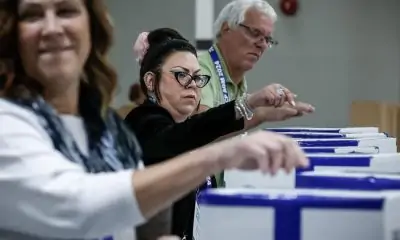The arrival in Regent’s Park of a marquee full of the world’s best contemporary art – along with artists, dealers and a parade of wealthy collectors – seized London by the scruff of its grimy neck in 2003. Galleries from New York, LA, Berlin, Paris, Antwerp, Moscow and Mexico City all set up stands underneath the huge temporary structure, designed by architect David Adjaye.
Since then, the annual wake-up shake that Frieze gives the capital has affected both its cultural and commercial life. And as each autumn has passed, the fair has moved towards becoming a visiting mini-empire rather than a travelling circus, with an array of spin-off exhibitions, auctions, live events and parallel franchises.
Established now as a key opportunity for art buyers and sellers, Frieze still also stimulates an outburst of creative interest and criticism, as well as a lot of high-end consumer expenditure. “Frieze triggered all this activity, with bars and restaurants opening up just for that week. And yet it was all about the art, and it somehow still is,” said Ropac, who has galleries in Austria and Paris as well as London.
“Unlike the art fair in Miami, which can be wild and slightly artificial, the art remains at the centre of Frieze, a place where many of the artists are often working and showing in the city around you.”
That first London fair was a gamble, but not in a spur-of-the-moment way. Frieze founders Matthew Slotover and Amanda Sharp were aficionados, as founding editors of the contemporary art magazine also called Frieze. Looking back, though, two decades on, Slotover concedes the launch of the fair was a bold play. “We didn’t really know any collectors, although we knew the gallery world really well. As critics we went to a lot of art fairs around the world, as they showed you the way things were going. Museums were only interested in established artists then, so if you wanted to see anything else you had to go to individual commercial galleries. In London, Frieze soon became the place to see that. We got lucky with the timing, I would say.”

Critic Adrian Searle caught the mood of the first fair in the Guardian. It was, he wrote, both “more fun, and more serious, than any art fair held in Britain that I can remember”, adding: “The selling that has been going on may have almost all been in euros and dollars, to collectors based abroad, but the public has been coming too, prepared to queue for an hour or so, and pay for a £10 ticket.”
It immediately became a wider creative platform, with Jarvis Cocker choosing to launch his latest band at an offsite venue, while DJs played at a string of gallery street parties. In 2007, it was also actually possible to leave the fair a little richer than you went in, because the Chapman Brothers, Jake and Dinos, handed out banknotes they had drawn on to visitors to White Cube’s booth.
Nowadays, the price of adult standard entry is more than £50, but contemporary art itself, which Slotover once described as “still being considered an insider joke” in 1991, when he and Sharp set up their magazine, is almost mainstream entertainment. “We saw the success of the opening of Tate Modern in 2000 and thought, ‘OK, this might now work in London.’ And so Frieze became a place for people to meet. Around 80% of the visitors are not art buyers,” adds Slotover, who, with Sharp, stepped away from his job at the fair in 2014.

Neil Wenman, the global creative director at Hauser & Wirth galleries, remains impressed by Slotover and Sharp’s choice of moment. “It’s crazy to think there was nothing like it in London before,” he said. “Until then, no one seemed aware there was such a responsive and engaged audience waiting for it. The clue was the way the 5 million people smashed expectations by visiting Tate Modern. Credit goes to Matthew and Amanda for creating something with appeal not only to artists but to the general public. No one had done anything like that.”
Wenman, who programmed the prestigious Swiss gallery’s Frieze presentations for several years, believes the fair was also cleverly aimed at fans of the Young British Artists movement of the late 90s. “That’s who they were levelling at. There was a confidence that would take these people on to a new thing after the success of Damien Hirst and Britpop and the Labour government coming in and investing in culture. London tapped into the heartbeat of what was going on in contemporary art and Frieze was a space where you could think about it all, as well as a place to rebel.”
In 2012, a little-sister fair, Frieze Masters, arrived, so that art made before 2000 could have a bit of limelight. And across the Atlantic, over on an island in the East River, the first New York Frieze Fair also took root, spreading west to Los Angeles’s Paramount Studios in 2018.
Ropac enjoyed the experimental freshness of the early days, he says, and has watched the tone of the fair develop. Although his gallery’s 2023 stand will show artists who were seen there in the early days, such as Georg Baselitz, Gilbert & George, Sylvie Fleury and Antony Gormley, alongside a special installation from the celebrated young talent Mandy El-Sayegh, the prices are now much higher.
Ten years ago, John Keane, an artist best known for his 2002 National Portrait Gallery study of the late politician Mo Mowlam, argued the fair had become a playground for an insider crowd with an unhealthy role in propping up the contemporary art business. “All the newspapers cover the same shows and you tend to see the same artists’ names coming up at the Tate, Hayward and Whitechapel galleries,” he complained. “It might be exciting, and I congratulate Frieze for becoming so successful, but if you happen to be outside the loop it doesn’t look quite so good.”
But Wenman feels the fair has kept most of its rebellious spirit, in spite of its growth and the money swirling around. “It’s still all about being irreverent. It’s true that prices are now very high, but that is a measure of the way buyers take contemporary culture so seriously. It also allows incredible cross-pollination into other creative industries, like London fashion, advertising and architecture.”

For Slotover, money and art collection are time-honoured bedfellows. “Collecting is something you do with spare money. Art ought not to be bought unless you have money to spare,” she said. “And the very rich have already got their houses and their cars. And, in fact, it is often the richest collectors who like the rebellious stuff. Not that there are many of them anyway: it is still a really small percentage of the most wealthy people. It has to be someone who also has a strong intellectual, cultural background or interest, as new art is tricky, challenging stuff.”
In defence of contemporary art, the fair’s co-founder argues, it is one of the few cultural arenas where the rich regularly rub shoulders with the up-and-coming artists they support, and are exposed to their perspectives. Among Slotover’s own highlights, looking back, was a 2005 Mike Nelson installation that only a few hundred Frieze visitors actually found. “It was a secret, dark corridor that wasn’t on the map of the fair, hidden between two booths. It was special and helped Mike, I think, to get shortlisted for the Turner prize the next year.”
Wenman’s Hauser & Wirth highlights are equally playful and include a bronze age stand in 2017 that was presided over by the historian Mary Beard. “We created a fictional provincial museum filled with exhibits and art by different artists, alongside things I had bought on eBay, displayed in glass cases. It was about challenging the way we present art.”
Beard, he recalls, loved it. “She took people around on tours and had such a dry wit. I could not have done that at any other art fair then.”






















